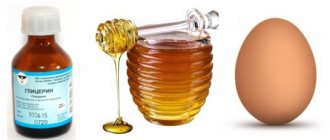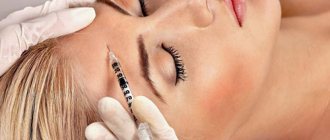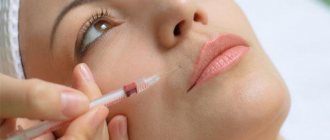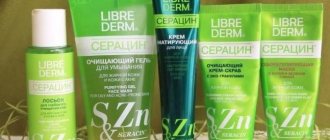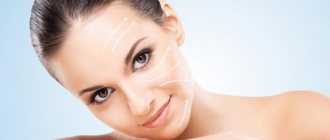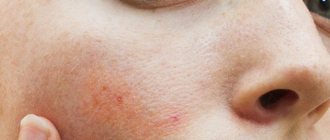Since the properties of hyaluronic acid became known to cosmetologists and doctors, the popularity of this component is only growing. Today, many are interested in what products contain hyaluronic acid and whether its use internally gives any positive results. It is known that the substance is part of connective and nervous tissue, epithelium. In addition, the chemical compound is part of the intracellular matrix. The body of an average weight person contains about 15 g of hyaluronic acid. The process of its synthesis and breakdown never stops, but at a certain age it slows down.
Why do tissues need hyaluronic acid?
Hyaluronic acid is an integral component of biological lubricant and synovial fluid (the mass that fills the cavities of the joints). It is responsible for the amount of moisture in cells and tissues. A deficiency of the product leads to rapid wear of cartilage, the initiation of aging processes and the appearance of age-related wrinkles. After scientists established the mechanism of action and purpose of the component, it was synthesized and began to be used for the following purposes:
- Treatment of cataracts, joint and cartilage diseases.
- Filling fabrics to increase their volume.
- Enrichment of drugs whose action is aimed at fighting cancer.
- Correction of aesthetic problems by introducing drugs into the thickness of the skin (fighting wrinkles).
- Enrichment of creams, lotions, and other medicinal and decorative cosmetics products.
When consuming products that contain hyaluronic acid, its original reserves are replenished. The substance is evenly distributed throughout the tissues and acts exactly where it is needed.
Foods that promote collagen production in the body
Products that have a direct impact on protein production are essential. These include vegetables, fruits, seeds, and dairy products.
Vegetables, fruits and berries
It is known that eating green leafy vegetables is considered to prevent diseases. Their beneficial property also lies in preventing the premature breakdown of collagen. Green vegetables contain chlorophyll, which increases the amount of prolagen in the skin.
Important! Chlorophyll has antioxidant properties that help prevent premature aging.
Tomatoes contain lycopene, which protects the skin from exposure to ultraviolet rays. The substance activates the production of protein compounds. To obtain a significant amount of lycopene, tomatoes must be subjected to heat treatment.
Recommended reading: Benefits of tomatoes for the body
Avocado contains tocopherol, which prevents collagen breakdown. Avocado oil also includes retinol, which promotes the production of a protein compound. Berries (strawberries, blackberries, raspberries and cranberries) are sources of ellaganic acid. They prevent protein breakdown under the influence of ultraviolet rays.
Recommended reading: Benefits of strawberries for the body
Citrus fruits contain ascorbic acid. Vitamin C is a binding component for proline-forming amino acids. This component precedes the formation of collagen. The positive effects of ascorbic acid also include protection from harmful toxins.
We recommend reading: Useful properties and contraindications of avocados
Vegetables, berries and fruits increase protein digestibility
Nuts and seeds
Pumpkin seeds contain zinc, which stimulates collagen production and slows down its breakdown. Zinc accelerates cellular regeneration processes, which affects the speed of wound healing.
Attention! Roasted seeds contain more nutrients.
Chia seeds, which contain omega-3 (of plant origin), have a beneficial effect on the body. PUFAs ensure smoothness and elasticity of the skin. The seeds are added to baked goods and porridges.
Nuts contain essential components for the skin
Milk and dairy products
Dairy products contain vitamin D and calcium, which stimulate collagen production.
Dairy products provide the body with essential substances
Vegetable and animal oils
Vegetable oils contain vitamins E and A in significant quantities. These compounds activate protein production in tissues. Since animal products are a source of collagen, oils can compensate for the lack of a component in the body.
Vegetable oils contain many beneficial vitamins that have a beneficial effect on the skin.
Porridges and cereals
Many people wonder whether cereals contain collagen. Cereals promote protein production due to the vitamins and minerals they contain. Particularly valuable are:
- barley;
- oatmeal;
- rice (brown);
- corn;
- buckwheat;
- millet;
- sprouted wheat sprouts.
Cereals can have a beneficial effect on protein production
Other foods that stimulate collagen production
Promote protein synthesis:
- soy products due to the presence of genistein;
- beans due to their hyaluronic acid content;
- nutritional components containing vitamin A, manganese, copper, selenium;
- chocolate;
- garlic;
- dried fruits.
Mechanism of action of hyaluronic acid
The main distinguishing feature of hyaluronic acid is that it can attract and retain up to 1000 times its own weight in moisture. Thanks to this, it moisturizes cells and tissues, maintaining their health and increasing functionality. Considering the fact that the substance is contained not only in the joint capsules and skin, but also in the eyes and heart valves, its benefits for the human body are invaluable. By creating the desired volume in certain places, hyaluronic acid increases the resistance of tissues before they are compressed. This underlies the preservation of visual acuity, maintenance of normal intraocular pressure and joint mobility.
Advice: Do not rely too much on products with a high content of hyaluronic acid during the flu period, if you are prone to allergies, diabetes, pregnancy and lactation. The substance may cause deterioration of the condition.
With all this, the main purpose of the product remains to maintain youthful and beautiful skin. If you know where hyaluronic acid is found and correctly formulate your diet, you can count on constant replenishment of its reserves in the cells. This will protect against the appearance of early wrinkles, the formation of deep facial furrows, drying out of the skin and its sagging.
Lactic acid
Lactic acid, always present in the human body, is a kind of “indicator” of the state of its health. By its content in the blood one can judge the presence of certain disorders in the functioning of systems and organs.
In a state of muscle rest, the normal content of lactic acid can vary between 0.33 – 0.78 mmol/l.
The concentration of lactic acid increases under the following conditions and disorders:
- intense muscle work (for example, during training);
- pathological conditions that are accompanied by increased muscle contractions (we are talking about epilepsy and other convulsive conditions);
- hypoxia;
- tumors;
- acute hepatitis;
- diabetes mellitus;
- toxicoses.
Benefits of Lactic Acid
- Delay in the development of putrefactive organisms directly in the intestines.
- Normalization of digestive processes.
- Moisturizing the epidermis.
- Regeneration, whitening and restoration of skin.
- Preventing blockage of the excretory ducts of the sebaceous glands.
- Elimination of inflammatory processes.
- Fighting bacteria and germs.
Important!
With constant physical activity (and it doesn’t matter whether it’s daily walks or going to the gym), lactic acid is produced by the body itself. But if you prefer “sofa” relaxation and lead a sedentary lifestyle, then lactic acid should be “supplied” to the body with food.
What foods contain lactic acid?
Lactic acid is mainly found in fermented milk products, whole grain and rye bread, meat (especially tendons and cartilage), yeast dough, lingonberries, blueberries, and also in royal jelly.
Lactic acid is formed during the process of fermentation and pickling of vegetables, protecting them from rotting, giving vegetables valuable nutritional and taste qualities.
In addition, this acid is used in the production of baby food, soft drinks, beer and confectionery.
Products High in Hyaluronic Acid
Since it became known that food can be a source of hyaluronic acid, cosmetologists began to develop specialized diets. Initially, a special table with a detailed menu was recommended for people monitoring their hyaluronic acid levels. But practice has shown that it is enough to simply know what components the substance contains and use them in your diet. Fanatical adherence to the rules in this case can play a cruel joke on the body, which will lead to not the most pleasant consequences.
Here are the most affordable products with hyaluronic acid that should be in every person’s diet:
- Red wine. It should be as natural as possible, without additives. It is better to consume it in its pure form, rather than use it as a component in preparing dishes.
- Animal products. Tendons, joints and bones of animals, especially chickens and roosters. It is best to stew the ingredients, boil them into broths, and use them for jellied meat. There is a lot of hyaluronic acid in regular boiled meat.
- Soy products. Tofu and soybeans are a source of phyto-estrogens. And these components stimulate the production of natural hyaluronic acid in the body. Particular attention should be paid to soy milk. If consumed on a regular basis, the production of the chemical compound will only increase.
- Starchy components. This includes beets and sweet potatoes. The younger and fresher the ingredients, the better. It is best to bake potatoes for these purposes. It is generally not recommended to heat beets. As a last resort, a canned component is introduced into the menu.
- Burdock extract. You can buy it at the pharmacy and add it to your food daily. It is even better to purchase a dried product and regularly prepare decoctions from it.
It turns out that you don’t have to focus on eating foods containing hyaluronic acid, but diversify your diet with components that stimulate its synthesis by tissues.
Conclusion
If you notice signs of aging skin, then your body does not have enough hyaluronic acid. You can make an appointment with a cosmetologist and get injections - the result will be immediate and long-lasting. But if you are not a supporter of beauty injections, include in your diet foods that contain HA or stimulate its production. Recipes and reviews are freely available.
Or, as an alternative, buy a special dietary supplement based on hyaluronic acid at the pharmacy. Taking it will help in just a few weeks to significantly improve not only your appearance, but also your overall health.
Vitamins that trigger the synthesis of hyaluronic acid
Despite the fact that hyaluronic acid is contained in food in sufficient quantities and enters cells in large volumes, achieving the required degree of absorption is not so easy. Even if you consume all the given components in kilograms, the desired effect may not occur. To achieve the expected result, the tissue must also be provided with special vitamins. They synthesize, preserve and conserve hyaluronic acid reserves.
- Vitamin R. It is not produced by the human body, but takes part in many important processes and reactions. To replenish the supply of the substance, you need to regularly consume citrus fruits, chokeberries, grapes, cherries, raspberries, and apples. There is no less vitamin P in beets, cabbage, garlic, tomatoes, buckwheat and green tea.
- Vitamin C. Even children know how useful this ingredient is. And its deficiency quickly begins to manifest itself in a decrease in immunity and a deterioration in a person’s appearance. Fortunately, the substance is included in many food products of modern people. For example, ascorbic acid is contained in the same components that were given for vitamin P.
Ideally, the diet should be designed so that the cells receive hyaluronic acid and the given vitamins in sufficient quantities at the same time. In this case, the positive effect of such “therapy” will begin to appear literally before our eyes within a few days after making changes to the menu.
succinic acid
Succinic acid is present in one quantity or another in all organisms without exception, providing a powerful healing effect without causing side effects.
This acid, which is an excellent energy stimulant, ensures the production of a compound called ATP, which is rightfully considered a kind of energy donor for all those biochemical reactions that occur in the human body.
Benefits of succinic acid
- Reducing the effects of radiation on the body and neutralizing many poisons.
- Prevention of tumor formation by inhibiting pathological cell division.
- Elimination of foci of inflammation.
- Improved wound healing.
- Normalization of kidney function.
- Increases the secretion of salts and promotes the dissolution of gallstones and kidney stones.
- Normalization of nervous system functions.
- Improved blood supply.
- Strengthening the nervous system and increasing the body's adaptive abilities.
- Strengthening cellular respiration.
- Improving the functioning of blood vessels, heart, brain, as well as kidneys and liver.
- Strengthening the immune system.
- Reducing blood sugar by stimulating insulin production.
- Improved energy metabolism.
What foods contain succinic acid?
Sources of succinic acid are:
- dairy products;
- cheeses;
- black bread;
- seafood (in particular shellfish);
- aged wines;
- beer (brewer's yeast);
- sauerkraut;
- gooseberry;
- turnip;
- rhubarb;
- light grapes;
- barley and sunflower seeds;
- alfalfa.
What to choose – natural or artificial hyaluronic acid?
Against the backdrop of the active distribution of serums, drinks and tablets with hyaluronic acid, many people have a question about what is the best way to maintain the balance of the component in the body. Practice shows that if you use specialized drugs, the substance in their composition will be maximally absorbed by the body. Moreover, positive results in this case will appear very quickly and clearly. Only a small part of the acid will enter the intestines, be processed and excreted from the body.
Advice: People who care about their appearance should pay attention to such a simple and affordable product as jelly. Gelatin, which is the basis for desserts, contains both hyaluronic acid and collagen. It turns out that with it the body receives two components at once, necessary to preserve youth and beauty.
In any case, when using hyaluronic acid orally, a person can expect to receive a more pronounced effect than when using it as superficial creams and lotions. It is best to combine these approaches, evenly distributing the roles of the approaches.
What are elastin and collagen
Elastin and collagen are thin, intertwined fibers that are part of the connective structure of the human body. The fibers are very thin in nature, so they break down quite quickly. At a young age, the body quickly and easily produces fibrillar proteins, thereby maintaining balance and ensuring the elasticity of the skin.
However, with age, the ability to independently restore proteins fades away, and the skin becomes wrinkled and dry. To maintain excellent shape, beauty and youth, you need to know what products contain collagen to ensure a regular supply of nutrients to the body.
How do we damage collagen?
This substance begins to be synthesized less under the influence of natural age-related changes. However, this is affected by a person’s lifestyle. The following factors lead to damage to collagen areas:
- Unbalanced diet, as well as consumption of foods high in sugar,
- Bad habits,
- Prolonged exposure to UV rays,
- Lack of sleep,
- Hormonal imbalances
- Poor environmental situation,
- Frequent stress conditions, distress,
- Lack of physical activity.
Due to these factors, the level of collagen protein decreases, as does the amount of elastin, resulting in loss of youth and health problems. It is against the background of deficiency that its role in the body is clearly visible.
Bad habits
The amount of collagen substance is also reduced due to bad habits, since it is destroyed under the influence of the toxicity of tobacco, alcohol, and drugs.
If a person eats poorly, lives in a place with a polluted environment, and also burdens his body with bad habits, he ages much faster.
Autoimmune disorders
There are some diseases that affect protein levels. These include autoimmune diseases. If they are present, antibodies are produced that damage the collagen substance. The solution to the problem is exclusively taking collagen-containing supplements. You should not select them yourself - this should be done by a doctor who determines the need for such a prescription.
Most of the factors that have a destructive effect on collagen substances can be controlled by a person. It is impossible to completely stop the process of its loss due to aging, but its control and replenishment can prevent a decrease in the level considered natural due to age.
Collagen: several essential amino acids
Indeed, when talking about what a collagen molecule is, we have to analyze its chemical composition. In fact, it is a fusion of several amino acids, each of which is necessary for the body. The first is glycine. It helps muscle tissue not become thin and promotes the regeneration of damaged joints. The second amino acid included in the collagen molecule is lysine, which is involved in the formation of bone tissue. Thanks to it, tissues are able to recover after physical activity, injuries and operations. Finally, the third - proline - ensures the strength of the collagen threads of the heart, skin and cartilage. Let's now move on to where collagen is found.

